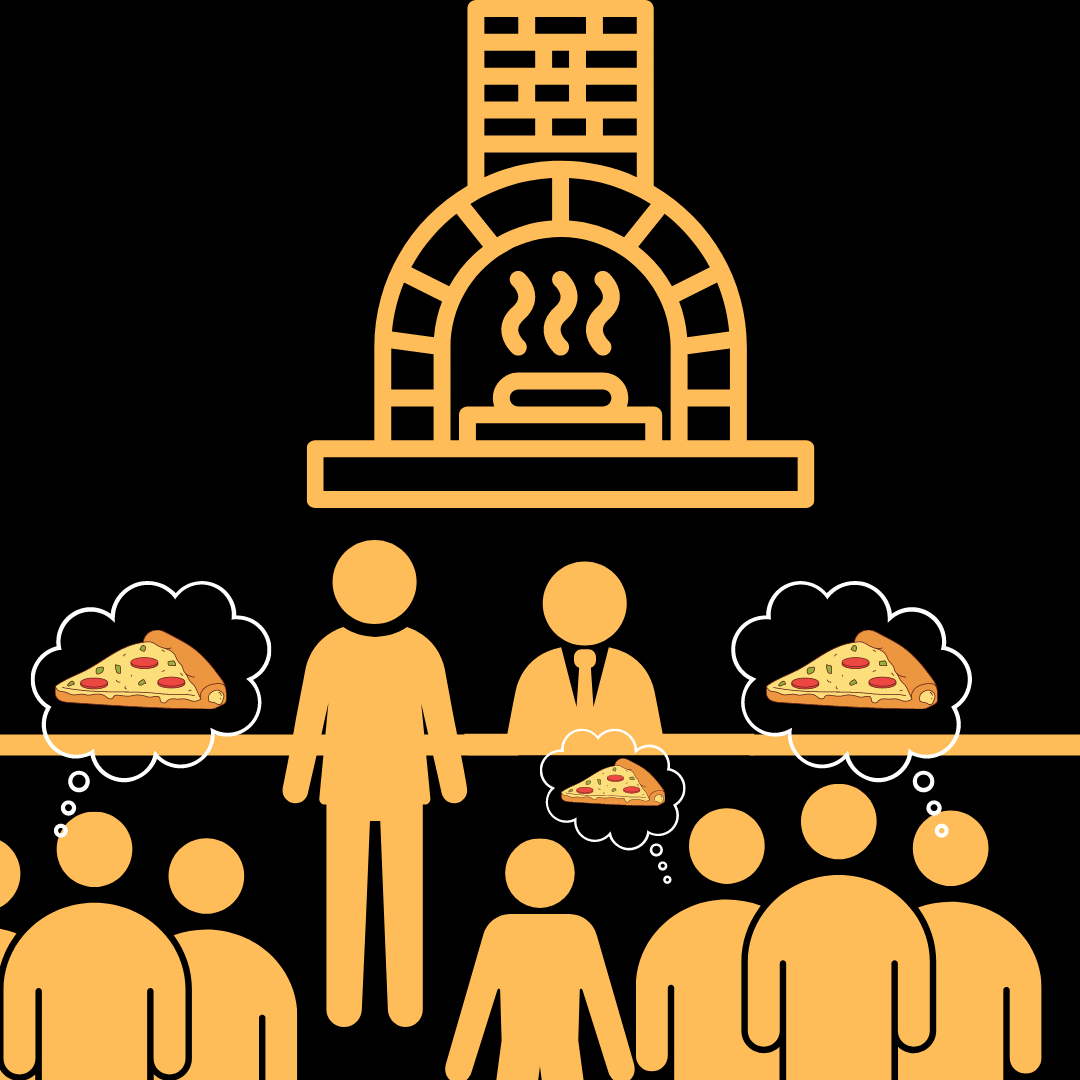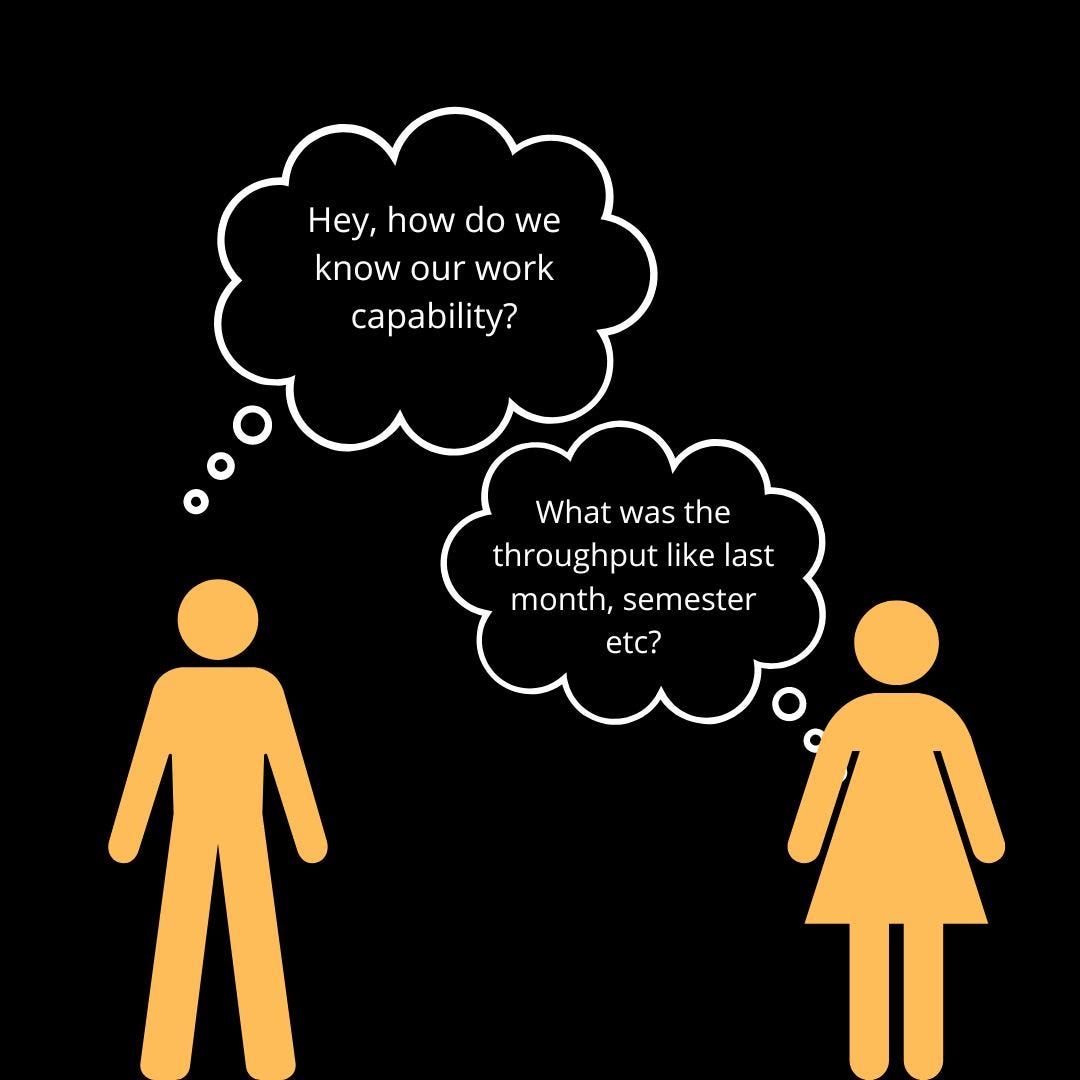
Supporting agilewithUkraine.
Today I want to tell you a little bit of a story about a festival in England. You know what the English summertime is like. We went to a thing called Pub in the Park in Marlow, and it was raining. It rained really heavily. And we were wondering what to eat and we saw these different stalls and we were disappointed with the food we were getting.
It was like a really tiny portion for a lot of money. And so we said, let’s get some pizza. And we went to a pizza stall and there was a big, long queue. I asked my family to go in under a tent and I just had an umbrella, luckily, and I had rain gear and I waited in the queue and I was waiting for quite a while.
I was getting a bit impatient, but I was also kind of enjoying the mindfulness of just being in a queue and just observing and watching the world go by and so on. But there was something that I noticed after I ordered my pizza. I was able to observe the business of the pizza stall from a different perspective.
And what I noticed was that the person who was taking the orders was really taking his time taking the orders. He was being careful that he took the right order, that he understood what the person was ordering. Then he was checking, how is the person getting on with rolling the dough? And that dough was being passed on to another person where the dough was already flattened and they put the sauce on and they add the cheese and the ingredients and so on.
And then, the next step in the process was the dough with the sauce and the ingredients on top, the precooked pizza, if you like was put on kind of a tray and then taken by another person and put into the pizza oven, which was an old fashioned Woodburn pizza oven. And then the pizzas, when they were cooked, they were taken out and put onto another area where a lady was checking the original order, boxing them, if there was a batch of four pizzas with different styles she was then checking with the guy who originally took the order. So they were checking not only when the order was taken, but again, when the order was being delivered. So there were no mistakes. I observed no mistakes be made in the orders.
I was waiting a long time for my pizza, but I noticed something that they weren’t overloading themselves because they were taking their time taking the orders. They slowed down the arrival rate of orders coming to the pizza stall. So it meant, there was really like a very good flow, that The people were working completely in tandem.
I could see there was a constraint there on the pizza oven. They probably could have done with two pizza ovens and that person seemed to be under a lot of pressure. But they didn’t take on any more work than they had the capability to take on. They were fully utilized but they first optimized their flow.
They made sure that the work was flowing properly. And then they stepped up the utilization of each step. People were taking a drink of water every now and then, they were not completely flat out. Although the guy, at the pizza oven seemed to have less breaks than the others. and I think this is a kind of a lesson to all of us.
We also see this on motorways highways, auto routes, where in some countries they have traffic lights to stop traffic coming onto the highway. And the reason that they do that is not to just be a nuisance to us, but actually to control the arrival rate of new cars coming onto the highway so that there is optimum flow of traffic going through the highway.
So when you’re doing knowledge work, we can apply the same principles. Don’t take on more work than the capability that you have in your team or in your team of teams. Look at the throughput how many pizzas is the team delivering? How many items of knowledge work is your team delivering? You do complex work so you’re using your brain. It’s not as smooth, utilization won’t be as high because the work isn’t as obvious, there are peculiarities with your work, but you can still observe what is the throughput of our team or team of teams. And then that might dictate how much work might come in. A little bit of a health warning with that.

Sometimes there’s a lot of noise, particularly in knowledge work. And so there’s different types of projects that come in. And so people might say actually throughput is too noisy. Cause there’s different types of project going on, but you can maybe lift up the time horizon to maybe months or quarters or even semesters or years.

And look at, this time last year, this quarter, last year, how many of these types of projects or product development initiatives did we take in. So that will tell us probably what our capability is for this time, unless we’ve made some improvements in the meantime. So that’s my little nugget for you today.
Keep an eye on your flow. Also talk to the people in who are involved in the process and find out what might be frustrating them, because if you over overplay flow metrics. If you overplay throughput and cycle time, how long things take what can happen is if the process is not really within the control of the team or the team of teams, they might get a bit frustrated, even if we tell them.
That we don’t really, it’s not your fault and all that, they still feel a little bit guilty sometimes the human factors kick in. So just be careful that you also ask people, what can we do to try and make this better? Are there some things outta your control that maybe we can help you with?
And executives that’s really where they can step in. They need to walk around, listen to teams, ask people what’s really going on and really be humble and help teams to improve the system within which they operate. That’s my nugget for you today.
Have a great day.
